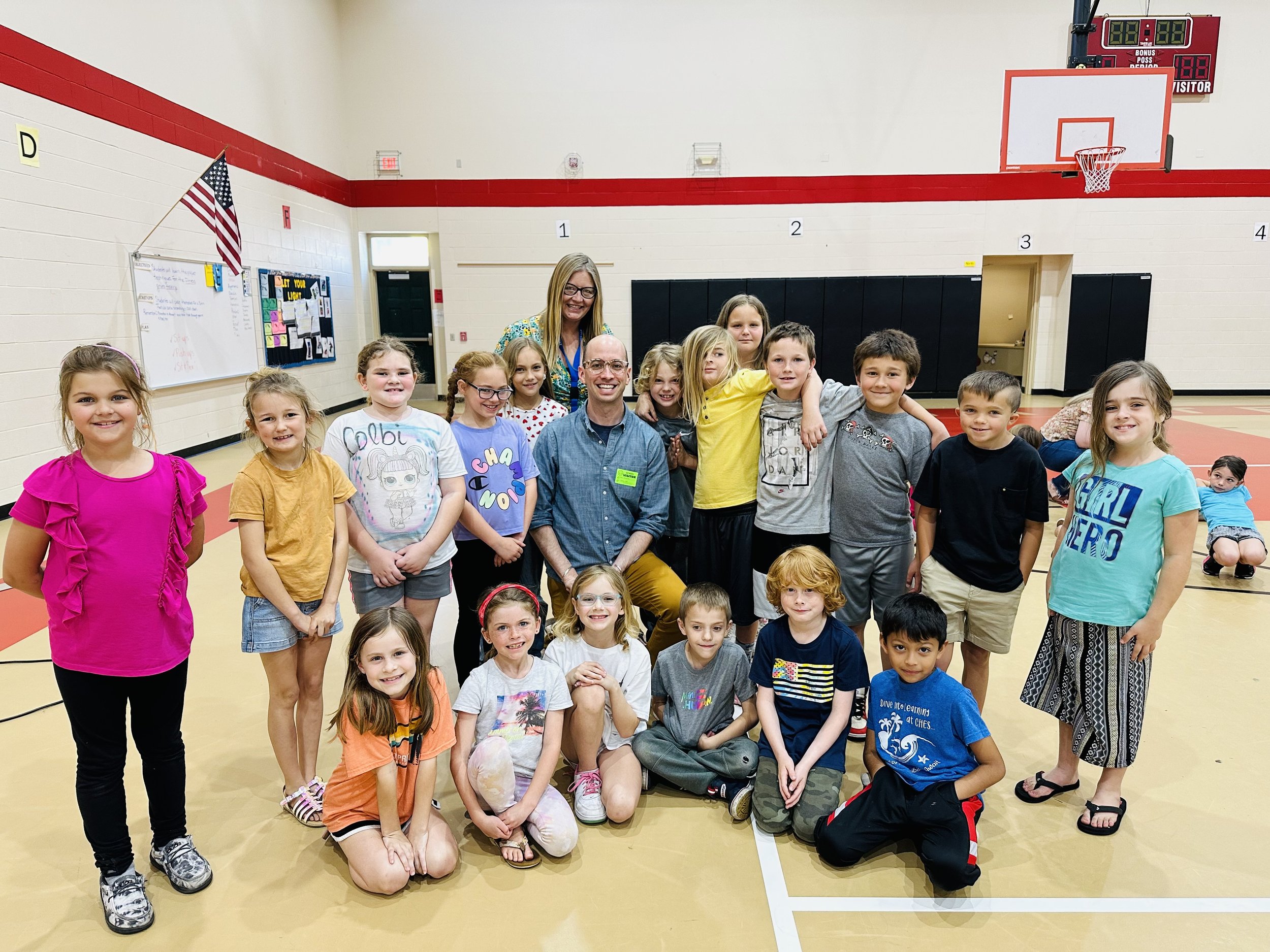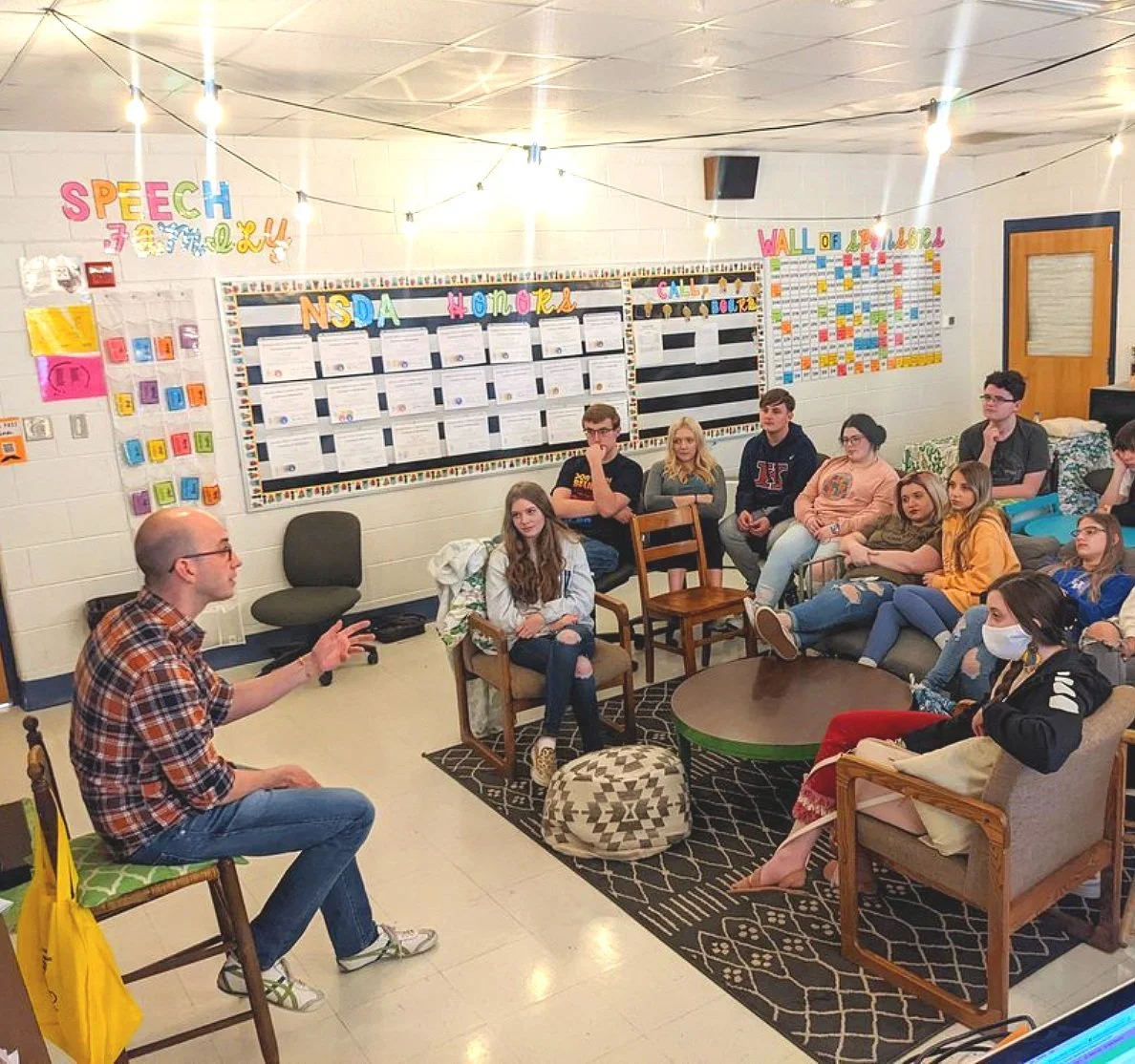
YOUTH EDUCATION
Deep Learning For Young Minds
Adam loves to share stories at schools and libraries. He is available for assemblies, Title I programming, family events, camps, reading programs, rewards events, and residencies. Adam tells to audiences as young as five years old and is happy to craft programs with specific content and lengths that work best for his audience.
Storytelling programs can include traditional or contemporary Appalachian stories, spooky stories, regional historical tales, personal tales, tall tales, or (most often) a combination of any of these. He is happy to work with elementary, middle, and high school students, as well as college-aged learners. His recordings have won a Parents’ Choice Gold Award and two Parents' Choice Silver Honors.
Stories - Any time. Any place.
-

Schools
Storytelling events at schools ignite children's imagination and enhance their listening skills, making learning more engaging and memorable. For teens, these events encourage self-expression and empathy, helping them connect with diverse perspectives and build a deeper understanding of the world around them.
-

Libraries
Storytelling events at libraries foster creativity and imagination in youth, helping them develop a love for reading and learning through engaging narratives. For adults, these events provide a sense of community and connection, offering a shared space to explore cultural heritage, personal experiences, and the power of spoken word.
-

Adult Education
Organizations can use storytelling workshops to enhance their workforce by improving communication skills, enabling employees to convey ideas more effectively and persuasively. These workshops also foster a stronger team culture by encouraging employees to share personal stories, building trust, and deepening connections within the team.
Storytelling Workshops for Students
-
This workshop inspires students to create characters based partly on themselves. Using a method adapted from the work of George Ella Lyon, students will work together to have an understanding of who lives where they do and what their shared experiences are. As we move toward developing individual characters within that space, students will draw from their own traits. Using this groundwork, we will then explore our imaginations to think about what these characters might do, where they might go, or what they dream about, leading toward a character that can then move through the action of a to-be-written story.
-
When we think of traditional stories, what we often imagine are wonder tales: stories of once upon a time that take place far away and long ago filled with difficult journeys, royalty, magic, and fantastic creatures. This workshop begins with Adam telling an example of an Appalachian wonder tale. Then, we explore the conventions of this genre found within the sample story. We build upon these observations to create our own world and characters who might exist in such a tale, with a focus on depth, necessary imperfection, and creative characterization. This workshop concludes with an exploration of whose characters might inhabit the same story so that students can continue to build stories beyond the workshop.
-
Our familiar Appalachian character Jack is here to teach about storytelling structure. In this workshop, Adam begins by sharing a traditional Jack tale. Next, we explore what makes the story traditional, and what that means in our regional culture. Then we break apart the structure in order to see how story narrative works, using it as a guideline to create our own traditionally- rooted story. This workshop includes group and individual work and encourages students to speak, draw, write, and share their work.
-
DescriptioTraditional Appalachian storytelling is filled with pourquoi tales: stories that try to explain the existence of something or why it exists a particular way. These tales explain how the deer got its antlers, why the chipmunk has stripes, why the possum’s tail is bare, and more. This workshop starts with Adam telling a pourquoi tale. After analyzing the story for comprehension, we explore the natural world around us in order to identify particular subjects for an original pourquoi tale. We then work through creative exercises to come up with reasoning before constructing our own tales that explain why something exists in a particular way.n text goes here
-
The tall tale is one of the great genres of story to come from Appalachia. This workshop begins with Adam telling an example of Appalachian tall tale. Then, we explore what makes story "tall" and which elements might have been stretched. Next, we examine the tools of tall tale with focus placed on convention, story development, and skills of exaggeration. Students will use personal experience as the basis of a newly-created story.
Please contact us here for a full list of current workshops.
Adam In Action
Have Insurance Will Travel
Great News!
Adam carries a Performers' Liability insurance policy and can travel with his own sound equipment depending on distance and availability. Pricing will depend on length and number of programs as well as distance to travel. Simply contact us at education@adam-booth.com to initiate a discussion so that we can create thought-provoking programs for your listeners!


